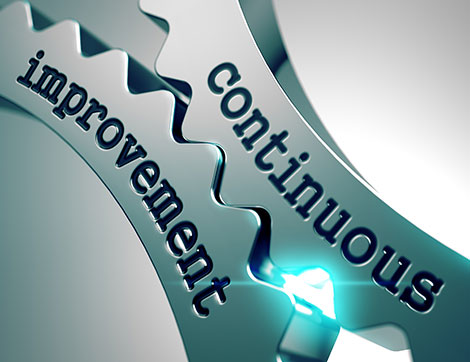
Continuous improvement theories and practices for a training organisation
A training organisation is always looking for ways to improve the quality of its services. Continuous improvement theories and practices can help to identify and implement improvements.

The following are some theories and practices that can help a training organisation to improve continuously:
Organisations need to identify the areas where they need to improve and focus their efforts on these areas. By using the above theories and practices, organisations can help themselves to improve continuously.
The Theory of Constraints (TOC) is a management philosophy that can be used to help organisations improve continuously. The TOC focuses on identifying and removing the obstacles that are preventing an organisation from achieving its goals.
Lean thinking is another management philosophy that can be used to help organisations improve continuously. Lean thinking focuses on eliminating waste and improving efficiency.
The PDCA cycle is a quality improvement tool that can be used to help organisations improve continuously. The PDCA cycle helps organisations to plan, do, check, and act on their improvements. It’s a cyclical process that begins with planning for improvement, followed by implementing the changes and then checking to see if they’ve had the desired effect. If not, then the cycle begins again with new plans.
Total quality management (TQM) is a quality improvement approach that can be used to help organisations improve continuously. TQM focuses on improving the quality of products and services.
Benchmarking is a quality improvement tool that can be used to help organisations compare their performance against other organisations. Benchmarking can help organisations to identify areas where they need to improve.
Employee involvement and empowerment are essential for continuous improvement. Employees need to be involved in the improvement process and given the authority to make changes.
Process mapping is a quality improvement tool that can be used to help organisations understand their processes. Process mapping can help organisations to identify areas where they need to improve.
Value stream mapping is a quality improvement tool that can be used to help organisations understand the flow of materials and information through their processes. Value stream mapping can help organisations to identify areas where they need to improve.
Kaizen events are quality improvement events that can be used to help organisations improve continuously. Kaizen events typically involve a team of employees working together to identify and implement improvements.
Six Sigma is a quality improvement methodology that can be used to help organisations improve continuously. Six Sigma focuses on reducing defects and improving quality.
The just in time (JIT) manufacturing philosophy is a quality improvement approach that can be used to help organisations improve continuously. JIT focuses on reducing waste and improving efficiency.
The Theory of Inventive Problem Solving (TRIZ) is a quality improvement tool that can be used to help organisations solve problems creatively. TRIZ can help organisations to identify areas where they need to improve.
Choosing the right continuous improvement theory or practice for your organisation will depend on a number of factors, including the nature of your organisation, the type of improvements you’re looking for, and your resources. But whichever one you choose, the important thing is to have a clear plan for how you’re going to implement it.
Comments are closed.